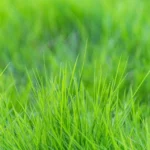
The Wollemi Pine, known scientifically as Wollemia nobilis, is a rare and ancient tree discovered in 1994 in Australia’s Wollemi National Park. Thought to be extinct for millions of years, this “living fossil” has unique fern-like leaves and knobbly bark. Fewer than 100 adult trees exist in the wild, making it critically endangered. Efforts are ongoing to cultivate and protect this fascinating species.
Discovered in 1994 by David Noble in Wollemi National Park, Australia: In September 1994, park ranger and avid bushwalker David Noble made a remarkable botanical discovery in Wollemi National Park, located approximately 150 kilometers northwest of Sydney, Australia. During a weekend bushwalking expedition, Noble stumbled upon a grove of unusual trees in a deep and remote canyon. Recognizing their significance, he collected samples which were later identified by botanists as a new genus and species previously thought extinct. This discovery was significant as it introduced a living species belonging to a lineage dating back over 200 million years.
Scientifically named Wollemia nobilis in honor of its discoverer: Following its discovery, the tree was named Wollemia nobilis. The genus name, Wollemia, reflects its location in Wollemi National Park, while the species name, nobilis, honors David Noble for his role in discovering this ancient tree. This scientific naming convention is a tribute to Noble’s contribution to botany and emphasizes the tree’s nobility and historical significance. The formal description and naming of the species were published in 1995, cementing its place in botanical history.
Dates back over 200 million years to the time of the dinosaurs: Fossil evidence indicates that the Wollemi Pine is part of an ancient lineage that dates back to the Mesozoic era, over 200 million years ago. This era, known for the dominance of dinosaurs, saw the flourishing of many conifer species, including ancestors of the Wollemi Pine. The survival of this tree to the present day provides a direct link to prehistoric times, making it a “living fossil.” Its ancient lineage offers scientists valuable insights into the plant life and ecosystems that existed alongside the dinosaurs.
Fewer than 100 mature trees exist in the wild: The wild population of the Wollemi Pine is critically small, with fewer than 100 mature trees known to exist. These trees are confined to a few remote and protected sites within Wollemi National Park. The small population size makes the species highly vulnerable to threats such as disease, climate change, and human interference. Conservation efforts focus on protecting these natural populations and increasing their numbers through controlled cultivation and propagation programs.
Can grow up to 40 meters (130 feet) tall: In its natural habitat, the Wollemi Pine can reach impressive heights of up to 40 meters (130 feet). The tallest individuals in the wild stand as towering sentinels within the deep, sheltered gorges of Wollemi National Park. These heights are achieved over many centuries, as the tree is slow-growing. The substantial height, combined with its distinctive knobbly bark and dense canopy of fern-like leaves, makes the Wollemi Pine a striking and majestic presence in its native environment.
Trunk diameter can reach up to 1 meter (3.3 feet): The Wollemi Pine’s trunk can grow to a substantial diameter of up to 1 meter (3.3 feet). The trunk is covered with a unique, knobbly bark that resembles bubbling chocolate. This distinctive bark pattern is not only visually striking but also plays a role in the tree’s resilience, potentially protecting it from various environmental stressors. The thick trunk provides structural support for the tree’s significant height and weight, allowing it to thrive in its rocky, canyon environment.
Oldest known individual is estimated to be over 1,000 years old: Among the few known Wollemi Pines in the wild, the oldest individuals are estimated to be over 1,000 years old. This remarkable longevity is indicative of the tree’s resilience and slow growth rate. The age estimates are based on growth patterns and other dendrological studies. These ancient trees have witnessed millennia of environmental changes and serve as living records of the region’s ecological history.
Produces both male and female cones on the same tree: The Wollemi Pine is monoecious, meaning it produces both male and female cones on the same tree. This reproductive strategy increases the chances of successful pollination and seed production. Male cones release pollen, which is carried by the wind to the female cones, where fertilization occurs. The female cones then develop seeds that can grow into new trees. This reproductive versatility is crucial for the species’ survival, especially given its limited population size.
The cones can grow up to 12 centimeters (4.7 inches) long: The cones of the Wollemi Pine are relatively large, with both male and female cones reaching up to 12 centimeters (4.7 inches) in length. Male cones are cylindrical and produce pollen, while female cones are more rounded and house the seeds. These sizable cones are a key characteristic of the tree and are essential for its reproduction. The seeds within the female cones are critical for generating new growth and maintaining the population.
The bark is dark and knobbly, often compared to bubbling chocolate: One of the most distinctive features of the Wollemi Pine is its dark, knobbly bark, which has a unique appearance often likened to bubbling chocolate. This unusual texture is not only aesthetically interesting but may also offer protection against pests and diseases. The bark’s rugged surface helps the tree withstand various environmental challenges and contributes to its overall resilience. This characteristic bark makes the Wollemi Pine easily recognizable and adds to its allure as an ancient and enigmatic species.
Leaves are arranged in a unique spiral pattern around the branches: The leaves of the Wollemi Pine are distinctive, arranged in a unique spiral pattern around the branches. This arrangement allows for efficient sunlight capture and photosynthesis, crucial for the tree’s growth and survival. The leaves are dark green, elongated, and resemble fern fronds, adding to the tree’s prehistoric appearance. This spiral phyllotaxy is a notable feature that helps differentiate the Wollemi Pine from other conifer species.
Leaves can grow up to 8 centimeters (3.1 inches) long: Each leaf of the Wollemi Pine can grow up to 8 centimeters (3.1 inches) in length. The elongated, flat leaves have a slightly curved shape and a leathery texture, which helps them withstand various environmental conditions. These leaves are vital for the tree’s photosynthetic process, converting sunlight into the energy necessary for growth and reproduction. The length and structure of the leaves are adapted to maximize light absorption in the shaded canyon environments where the tree naturally grows.
Prefers to grow in deep gorges and sheltered locations: The natural habitat of the Wollemi Pine is characterized by deep gorges and sheltered locations within Wollemi National Park. These environments provide the microclimate conditions necessary for the tree’s survival, such as higher humidity, reduced temperature fluctuations, and protection from strong winds. The isolation of these deep gorges has helped protect the Wollemi Pine from human activity and environmental changes, contributing to its survival over millennia.
Has been successfully propagated in cultivation to ensure its survival: To prevent the extinction of the Wollemi Pine, scientists have successfully propagated the tree through cultivation. Propagation methods include both seed germination and cutting propagation, allowing for the production of genetically identical clones. These cultivated trees are now grown in botanical gardens and private collections worldwide, creating an ex-situ conservation network. This effort not only helps preserve the species but also raises public awareness about its significance and conservation needs.
Found in a remote, secret location to protect it from poaching: The exact locations of the wild Wollemi Pine populations are kept secret to protect them from poaching and other threats. This secrecy is crucial because the rarity and uniqueness of the tree make it a target for illegal collection. Conservationists have taken extensive measures to secure these sites, including limiting access to authorized personnel only and implementing monitoring programs to ensure the ongoing protection of the wild populations.
Initial discovery site contained fewer than 40 adult trees: When the Wollemi Pine was first discovered, the initial site contained fewer than 40 adult trees. This extremely limited population highlighted the species’ critical status and underscored the urgency of conservation efforts. Subsequent surveys have identified a few additional sites with small populations, but the overall number of mature trees remains critically low. This initial discovery emphasized the need for immediate action to protect and propagate the species.
DNA analysis shows it has no close living relatives: DNA analysis of the Wollemi Pine has revealed that it has no close living relatives, making it a unique and isolated member of the plant kingdom. This genetic distinctiveness means that the Wollemi Pine represents a separate lineage within the Araucariaceae family, having diverged from its nearest relatives millions of years ago. The genetic studies underscore its significance as a relic of ancient flora and highlight the importance of preserving its unique genetic heritage.
The species is critically endangered according to the IUCN Red List: The International Union for Conservation of Nature (IUCN) has classified the Wollemi Pine as critically endangered. This designation reflects its extremely limited distribution, small population size, and the various threats it faces in the wild, including potential disease outbreaks and climate change impacts. The critically endangered status emphasizes the need for continued conservation efforts and monitoring to ensure the species’ survival.
The first public sale of Wollemi Pines occurred in 2005: In 2005, the Wollemi Pine was made available for public sale for the first time. This initiative aimed to raise funds for conservation efforts and to increase the species’ presence in cultivation. The public sale generated significant interest, with saplings being sold to botanical gardens, private collectors, and the general public. This strategy not only helped fund ongoing conservation projects but also contributed to the broader distribution and awareness of the Wollemi Pine.
Saplings were sold for around $100 each initially: When Wollemi Pine saplings were first sold to the public, they were priced at approximately $100 each. This pricing reflected both the rarity and the conservation value of the tree. The funds raised from these sales were directed towards supporting the conservation and propagation efforts needed to protect the species in the wild. The relatively high price also helped underscore the tree’s unique status and the importance of its preservation.
The Wollemi Pine can tolerate temperatures from -5°C to 45°C (23°F to 113°F): The Wollemi Pine exhibits remarkable resilience, being able to tolerate a wide range of temperatures from -5°C to 45°C (23°F to 113°F). This adaptability allows it to survive in diverse climatic conditions, from the frosty winters to the scorching summers. Its ability to endure such extremes is partly due to its ancient lineage, which has equipped it with survival mechanisms over millions of years. This temperature tolerance is crucial for its conservation, as it can be cultivated in various parts of the world outside its native habitat.
Known for its resilience and ability to recover from damage: The Wollemi Pine is known for its resilience, particularly its ability to recover from damage. This resilience includes the capacity to regrow from its base if the upper parts of the tree are damaged or destroyed. This trait is beneficial in its natural habitat, where it can endure physical damage from falling rocks, animal activity, or environmental stresses. The tree’s ability to regenerate contributes significantly to its longevity and survival, even in challenging conditions.
Can survive with very little soil and nutrients: The Wollemi Pine can thrive in poor soil conditions with minimal nutrients. This adaptability is advantageous in its native rocky canyon environments, where soil quality can be low and inconsistent. The tree’s root system is efficient at extracting necessary nutrients and water from sparse resources, allowing it to grow and reproduce despite the challenging conditions. This characteristic also makes it suitable for cultivation in various soil types worldwide, supporting its conservation and propagation efforts.
Efforts are underway to plant Wollemi Pines in botanical gardens worldwide: To ensure the survival of the Wollemi Pine, significant efforts are being made to plant it in botanical gardens across the globe. These initiatives are part of an ex-situ conservation strategy, aiming to establish secure populations outside its natural habitat. Botanical gardens provide controlled environments where the trees can be studied, propagated, and displayed to the public, raising awareness about their conservation. This global planting effort also creates genetic reservoirs, safeguarding the species against potential threats in the wild.
Plays a crucial role in studying ancient plant species and their evolution: The Wollemi Pine is invaluable for scientific research, offering insights into the evolution of ancient plant species. Its existence provides a direct link to prehistoric flora, allowing scientists to study its genetics, physiology, and ecological interactions. Research on the Wollemi Pine helps understand plant evolution, adaptation mechanisms, and resilience strategies over millions of years. This knowledge can inform broader conservation practices and contribute to protecting other endangered and ancient species.
FAQs about the Wollemi Pine:
Why is the Wollemi Pine called a “living fossil”?
The Wollemi Pine earns the nickname “living fossil” because it belongs to a genus (Wollemia) that dates back to the mid-Cretaceous period, roughly 110 million years ago. Fossil evidence suggests these trees coexisted with dinosaurs before their extinction event. Discovering a living specimen of such an ancient lineage in 1994 was a remarkable feat, offering a glimpse into a long-lost era.
How rare is the Wollemi Pine?
The Wollemi Pine is classified as critically endangered by the IUCN Red List of Threatened Species. When discovered, only a small population of these trees existed in a remote location within Wollemi National Park, Australia. Bushfires in 2019 further threatened the wild population, highlighting the precarious nature of their existence. Conservation efforts are underway to protect the remaining wild trees and cultivate them in botanic gardens worldwide.
What makes the Wollemi Pine so unique?
Beyond its ancient lineage, the Wollemi Pine possesses several unique characteristics:
Fire Resistance: Unlike most conifers, the Wollemi Pine exhibits a degree of fire tolerance. Its bark structure may offer some protection during low-intensity fires, potentially aiding survival.
Unusual Branching: The branches typically don’t branch further after a few years, and each branch terminates in a cone or ceases growth. This branching pattern is uncommon among conifers.
Adaptability: Despite its ancient origins, the Wollemi Pine can tolerate a wider range of temperatures than initially thought. While native to a subtropical climate, it can survive in cooler environments.
Can I grow a Wollemi Pine at home?
Surprisingly, yes! The Wollemi Pine has become commercially available and can be grown as a houseplant or outdoors in suitable climates. They are known to be relatively easy to care for, requiring well-drained soil, moderate watering, and protection from frost. However, due to their endangered status, it’s important to purchase them from reputable sources that cultivate them responsibly.
What are the challenges of conserving the Wollemi Pine?
Conserving the Wollemi Pine presents several challenges:
Limited Population: The small number of wild trees makes the species highly vulnerable to threats like habitat loss and disease outbreaks.
Habitat Dependence: The specific environmental conditions necessary for their survival may limit their ability to thrive in other locations.
Balancing Cultivation and Protection: While cultivation helps preserve the species, it’s crucial to ensure commercialization doesn’t negatively impact the wild population.
Conservation efforts focus on protecting the remaining wild trees, researching their biology, and promoting responsible cultivation practices.









